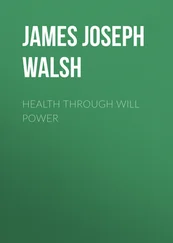James Walsh - Psychotherapy
Здесь есть возможность читать онлайн «James Walsh - Psychotherapy» — ознакомительный отрывок электронной книги совершенно бесплатно, а после прочтения отрывка купить полную версию. В некоторых случаях можно слушать аудио, скачать через торрент в формате fb2 и присутствует краткое содержание. Жанр: foreign_prose, psy_theraphy, foreign_edu, foreign_antique, на английском языке. Описание произведения, (предисловие) а так же отзывы посетителей доступны на портале библиотеки ЛибКат.
- Название:Psychotherapy
- Автор:
- Жанр:
- Год:неизвестен
- ISBN:нет данных
- Рейтинг книги:4 / 5. Голосов: 1
-
Избранное:Добавить в избранное
- Отзывы:
-
Ваша оценка:
- 80
- 1
- 2
- 3
- 4
- 5
Psychotherapy: краткое содержание, описание и аннотация
Предлагаем к чтению аннотацию, описание, краткое содержание или предисловие (зависит от того, что написал сам автор книги «Psychotherapy»). Если вы не нашли необходимую информацию о книге — напишите в комментариях, мы постараемся отыскать её.
Psychotherapy — читать онлайн ознакомительный отрывок
Ниже представлен текст книги, разбитый по страницам. Система сохранения места последней прочитанной страницы, позволяет с удобством читать онлайн бесплатно книгу «Psychotherapy», без необходимости каждый раз заново искать на чём Вы остановились. Поставьте закладку, и сможете в любой момент перейти на страницу, на которой закончили чтение.
Интервал:
Закладка:
The extent to which the curative power of electric sparks from the Leyden jar was supposed to go is best appreciated from a list of the affections that one distinguished electro-therapeutist claimed could be not only benefited, but absolutely cured by its employment. It included pulmonic fever, under which title practically all the more or less acute diseases of the chest were included, and some at least of the sub acute; dropsy, by which was meant every effusion into the abdominal cavity no matter what its cause; dysentery, under which was included at that time not only the specific dysenteries but many of the summer complaints and some typhoid fevers; diarrhea, including all the intestinal diseases not already grouped under dysentery; putrid and bilious fever, under which category were assembled the worst cases of typhoid; typhus fever, and all the other continued fevers, and any febrile condition reasonably severe for which no other term could be used; epidemic diseases, pest, anthrax, small-pox, cancer, gravel, diseases of the bladder and of the brain and spinal cord. The Leyden jar had no real effect on any of these affections, but doubtless the mental effect of this new remedy was quite sufficient to be of distinct therapeutic value in the milder forms of many of them.
With Galvani's discovery of the twitching of the muscles of the frog there came a new impetus to the exploitation of electricity in medicine. Many felt that now it was beyond doubt that electrical energy bore some definite relation to vital energy—that one might be made to replace the other if indeed they were not more or less the same thing. This led to many applications of electricity in medicine. Students of physiology were convinced that they were getting close to the solution of the mystery of life, and their persuasion was readily carried over to the people of the time, so that electricity literally worked wonders on them.
When the various electrical machines were invented and their use popularized, pseudo-science proceeded to exploit them, and succeeded, because the mechanical shock of the electric current proved a suggestive therapeutic stimulant. Gordon in the eighteenth century made the first practical frictional electrical machine, and soon some men were observing wonderful effects with it, though the charge was so small that it could actually accomplish little. Just after the invention of the voltaic pile in 1800 it came to be used in medicine with wonderful results. We are prone to think that electrotherapy is modern, but when electrical machines were quite crude, current strength small and potential low, old-time electro-therapeutists were recording their wonderful results and were getting just as marvelous effects as are reported now by enthusiasts. Considerable electro-medical literature existed a century ago when next to nothing was known of electricity. When, later, high potency currents came in and the Wimshurst and other powerful machines were invented, there was revealed at each novel invention a new horizon in electro-therapy and wondrous cures were reported. These continue to occur in the practice of a few favored individuals, though the general profession secures only some ordinary mechanico-muscular effects, which demand much time for real good to be accomplished and have nothing at all of the marvelous about them.
The power of the pseudo-scientific aspect of electricity to influence patients, far from being lost in our time, has rather been increased. Our newspapers make their readers eminently suggestible because they constantly furnish suggestions, and nothing so strengthens a function of any kind as exercise of it. All sorts of electrical contrivances and apparatuses are advertised to cure various pains and aches. Many of them actually seem to relieve long-standing discomfort, though it is not through any electrical power that they do so, but entirely through their influence on the patient's mind. A museum of the electrical contrivances of various kinds for which absurdly high prices are paid at the present time and which people recommend to others because of having been benefited by them would be interesting. There are belts of many kinds, and rings, and medallions, and plates to be worn on the back and on the chest, and curiously shaped poles or "polar plates" resembling various organs, and pendants and armlets and anklets and insoles of many, many kinds, usually going in pairs, one made in zinc and the other in copper, and worth exactly as much as the weight of copper and zinc in them, yet curing chronic ailments by suggestion, or at least bringing relief from many pains and aches complained of.
LIGHT AND PSYCHOTHERAPY
Just as electricity has always been therapeutically abused by those who have taken advantage of the suggestive influence of its marvelous energy, so each new discovery in light has been the source of pseudo-scientific applications to medicine. When the explanation of photography was first made, shortly after the middle of the nineteenth century, and it was demonstrated that it was the blue light, or at least that end of the spectrum, and even some of the rays beyond the visible violet, which were the most active in this regard, applications of this fact to popular medicine became the order of the day. We had a wave of "blue light therapy" that wandered over this country and sold tons of blue glass. People simply sat beneath the blue glass as the sun shone through it and were supposed to absorb the actinic rays and acquire new life. According to many who had tried them, the ultra-violet rays were quite equal in their power to heal and restore new vigor to old frames to the fabled elixir of life of the olden time. "Rheumatism (that universal ill of the unthinking) in all its hydra-headed forms disappeared," as one enthusiast declared, "before the blue light, like the mists of the morning before the sun." All this, though it is said that the movement had no more serious foundation than the desire of a manager of a glass factory, who found himself stocked up with blue glass through a mistake, to dispose of his surplus stock. He not only did so, but many other manufacturers turned special attention to the new product because of the demand for it. The newspaper advertising was through the reading columns. The results were heard of on every side.
THE X-RAY
That happened two generations ago, and it might be supposed that in the meantime there had been so much advance in popular education, and particularly in the diffusion of scientific knowledge, that such a self-deception on the part of scientists, and blind following by the people, could not take place in our time. Just as soon as Roentgen discovered the X-ray, however, we began to have applications of that wonderful agent to curative purposes. About 1900, scarcely five years after Roentgen's discovery, there was hardly an ailment that some one did not claim to have seen treated successfully by the X-rays. Especially was this true for the chronic and hitherto supposedly incurable diseases. All the forms of malignant disease were treated by the new agent, and some supposedly marvelous cures were reported. Everything chronic was favorably affected—lupus, rodent ulcer, eczema, acne rosacea, even tuberculosis of the lungs. At the time I was on the staff of a medical journal, and the favorable reports came in so thick and fast that it really looked for a time as though the surgery of the future was to be much simplified. It took but a year or two to show us how little of lasting therapeutic benefit there was in the X-ray, in spite of the fact that it is a marvelous agent in its action upon living tissues. At the present moment it is used comparatively little, and its use is gradually diminishing, except for very special limited affections.
RADIUM AND RADIO-ACTIVITY
When radium was discovered, though it came so soon after the discovery of the X-ray and our disappointment with it, the old story of another pseudo-scientific medical application was told. For a time it looked as though radium might accomplish all that had been promised for the X-ray, though that promise had been so lamentably broken. Then, besides radium, we had brought home to us the whole class of radio-active substances, and their possibilities. The internal administration of radio-active liquids was one of the hopes of therapeutics. We had found it difficult to explain how many of the mineral waters produced the beneficial action credited to them when taken at the spring. We knew that artificially made waters of exactly the same chemical composition, so far as we could determine, did not have the same effect, nor even the waters themselves when taken at a distance from the spring.
Читать дальшеИнтервал:
Закладка:
Похожие книги на «Psychotherapy»
Представляем Вашему вниманию похожие книги на «Psychotherapy» списком для выбора. Мы отобрали схожую по названию и смыслу литературу в надежде предоставить читателям больше вариантов отыскать новые, интересные, ещё непрочитанные произведения.
Обсуждение, отзывы о книге «Psychotherapy» и просто собственные мнения читателей. Оставьте ваши комментарии, напишите, что Вы думаете о произведении, его смысле или главных героях. Укажите что конкретно понравилось, а что нет, и почему Вы так считаете.












